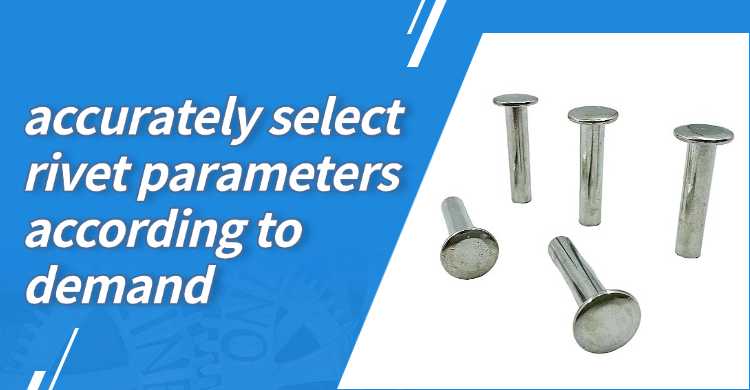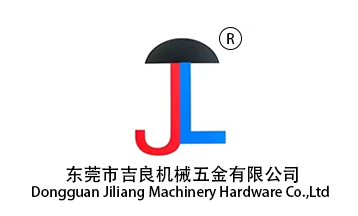
Submit for an Online Quote:
Send us (sale802@jiliang988.com) the completed form along with your drawing, and we’ll provide you with a fast and competitive quote.
If you have any questions or need assistance, feel free to contact us. We’re here to help!
一.Core Parameters of Rivet Size
1.1 Diameter
Nominal diameter :the standardized diameter of the rivet shank (3mm, 5mm, 8mm, etc.), which decides the size of the riveting hole.
How to measure: By using a caliper, measured the thickest part of the rivet shank.
1.2 Length
Total length: The distance from the head of the rivet to its base determines thickness compatibility in the material.
Riveting lift: The segment that is involved in real riveting, and the amount left after stacking the material.
Starting with : Approximate Rivet length ≈ Sum of thickness of all the materials + 1.5 × Diameter of rivet (Experimental Value).
1.3 Head Dimensions
Head type: The shape of the head — round head, flat head, countersunk head or semi countersunk head — is appropriate for different installation configurations.
Head diameter and height : These parameters affect the bearing area and aesthetic appearance of the rivet.
二.Custom Rivets Components Specification
2.1 Material
Materials: Mostly metal materials: aluminum, steel (carbon steel/stainless steel), copper, titanium alloy, nylon, etc.
Selection criteria:
Strength requirements (e.g., stainless steel for high-load scenarios).
Resistance to corrosion (e.g., 316 stainless steel or titanium alloy for marine environments)
Light weight requirements (e.g., aerospace applications: aluminum or titanium).
2.2 Surface Treatment
Coating: Zinc plating, Nickel plating, Anodization, Dacromet coating.
Functions: To prevent rust and corrosion, to improve wear resistance, to control electrical conductivity or provide a decorative role.
2.3 Strength Grade
Tensile strength: The maximum load carrying capability of a rivet under tension.
Shear strength: Resistance to transverse shear forces.
Standards in the industry: E.g. ISO 15983 (aerospace), DIN 7337 (general industry), etc.
2.4 Special Specifications
Hollow rivets: Used for lightweight or threading applications
Blind rivets (pull-through rivets): The installation can be done on one side,
which is right for double-sided operations:
Non-standard shapes (i.e. square, stepped) rivets to meet specific design solutions.
三.Size And Specifications Based On Demand
Step 1: Define the Application Context
Examples:
Automotive Manufacturing: High strength and vibration resistance (select steel rivets with anti-anti-corrosive coating).
Electronics: Must be thin (2mm probably) and featherweight (aluminum or nylon).
Step 2: Measure Current Variables
If replacing existing rivets, measure the original rivets accurately for diameter, length and head size.
Step 3: Match Material to Environment
Withstand high-temperature enviroment: Titanium alloy or high-temperature resistant stainless steel.
MOISTURE ENVIRONMENT: Use galvanized or Dacromet-treated rivets.
Step 4:If Nothing works, contact Vendor for Technical assistance
Send drawings or samples so you can be sure that custom parameters will be compatible with production equipment.
四.Q&A (Frequently Asked Questions)
Q1: What is the effect on rivet strength of increased rivet diameter and rivet length?
Wider diameters and greater lengths usually enhance riveting strength as long as severe compression, which causes material deformation, is avoided.
Q2: How to check rivets if they can be used in high-temperature environments?
You are also used to mouthing the data until October 2023.
Q3: What is the MOQ for custom rivets?
Usually 500-1000 units, based on supplier's process complexity.
Q4: What is the cycle for customization?
Standard parameters: 1-2 weeks —Special processes or materials: 3-4 weeks.
五.Application Case Sharing
Case 1: New Energy Vehicle Battery Boxes are Drawn in Enjoyment
Menentukan syarat; ringan, tahan getaran, tahan korosi.
Fix: Custom rivet type (countersunk head, diameter 6mm, surface anodized)
Case 2: Structural Reinforcement of Outdoor Equipment
Permissible / requirement: weatherproof, high shear strength
Answer: 8mm diameter Stainless Steel rivets/ Galvanizing + Dacromet coating
Summary:
Selection of rivet: The size and specification of custom rivets have to be based on application scenarios, material characteristics and process constraints. By accurate parameter matching, it could get the best performance and cost balance. The best way is to cooperate with supplier professionally, which can also guarantee reliability and adaptability of technical support and sample testing.

 Language
Language








